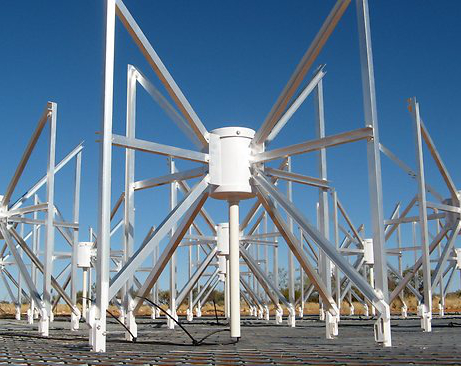Mystery bursts emerge from space
 A team mapping radio waves across the Universe has discovered something unusual.
A team mapping radio waves across the Universe has discovered something unusual.
The unknown object releases a giant burst of energy three times an hour, and is unlike anything astronomers have seen before.
Spinning around in space, the strange object sends out a beam of radiation that crosses our line of sight, and for a minute in every twenty, is one of the brightest radio sources in the sky.
The team who discovered it think it could be a neutron star or a white dwarf - collapsed cores of stars - with an ultra-powerful magnetic field.
“This object was appearing and disappearing over a few hours during our observations,” says astrophysicist Dr Natasha Hurley-Walker, from the Curtin University node of the International Centre for Radio Astronomy Research, who led the team that made the discovery.
“That was completely unexpected. It was kind of spooky for an astronomer because there’s nothing known in the sky that does that.
“And it’s really quite close to us - about 4000 lightyears away. It’s in our galactic backyard.”
The object was discovered by Curtin University Honours student Tyrone O'Doherty using the Murchison Widefield Array (MWA) telescope in outback Western Australia and a new technique he developed.
“It’s exciting that the source I identified last year has turned out to be such a peculiar object,” said Mr O’Doherty, who is studying for a PhD at Curtin.
“The MWA’s wide field of view and extreme sensitivity are perfect for surveying the entire sky and detecting the unexpected.”
Objects that turn on and off in the Universe are not new to astronomers - they call them ‘transients’.
ICRAR-Curtin astrophysicist and co-author Dr Gemma Anderson said: “When studying transients, you’re watching the death of a massive star or the activity of the remnants it leaves behind.”
‘Slow transients’ - like supernovae - might appear over the course of a few days and disappear after a few months.
‘Fast transients’ - like a type of neutron star called a pulsar - flash on and off within milliseconds or seconds.
But Dr Anderson said finding something that turned on for a minute was quite weird.
She said the mysterious object was incredibly bright and smaller than the Sun, emitting highly-polarised radio waves - suggesting the object had an extremely strong magnetic field.
Dr Hurley-Walker said the observations match a predicted astrophysical object called an ‘ultra-long period magnetar’.
“It’s a type of slowly spinning neutron star that has been predicted to exist theoretically,” she said.
“But nobody expected to directly detect one like this because we didn’t expect them to be so bright.
“Somehow it’s converting magnetic energy to radio waves much more effectively than anything we’ve seen before.”
Dr Hurley-Walker is now monitoring the object with the MWA to see if it switches back on.
“If it does, there are telescopes across the Southern Hemisphere and even in orbit that can point straight to it,” she said.
“More detections will tell astronomers whether this was a rare one-off event or a vast new population we'd never noticed before.”
A visualisation of what the object may look like can be seen below.







 Print
Print